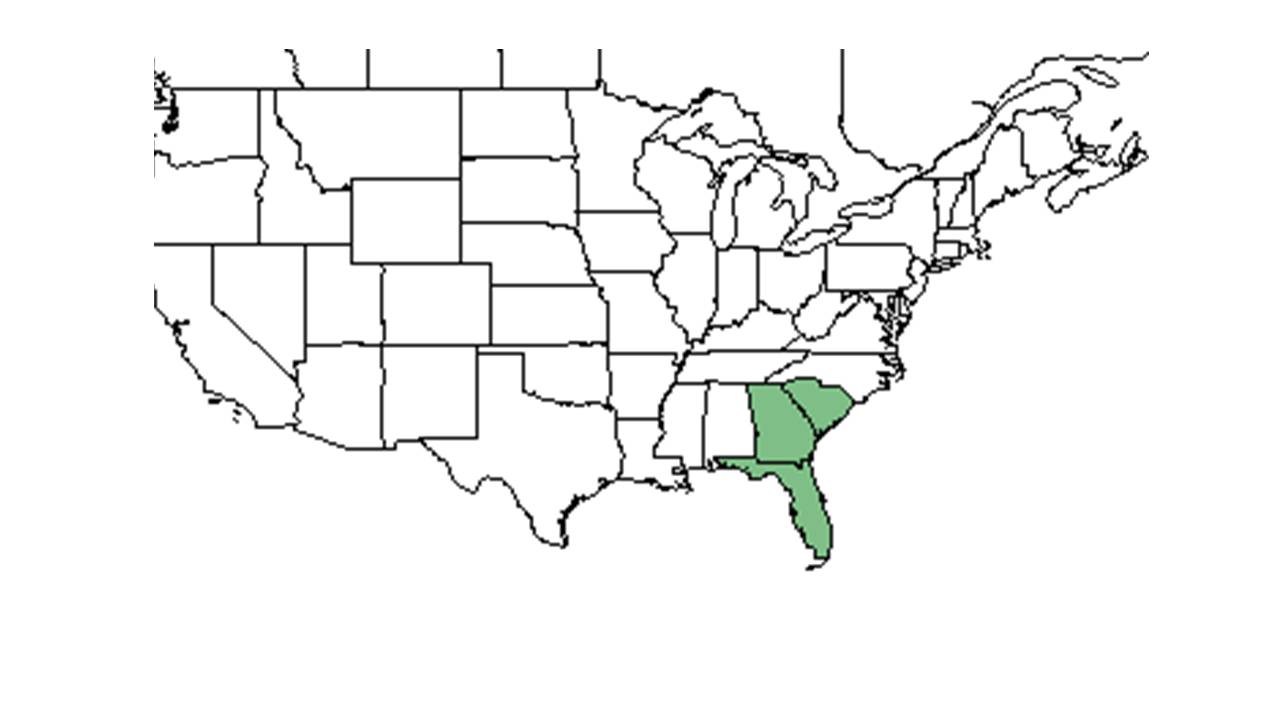Difference between revisions of "Dioscorea floridana"
HaleighJoM (talk | contribs) (→Ecology) |
|||
| Line 18: | Line 18: | ||
}} | }} | ||
| − | Common name: Florida yam | + | Common name: Florida yam, Florida wild yam |
==Taxonomic notes== | ==Taxonomic notes== | ||
Synonym: ''Dioscorea villosa'' L. var. ''floridana'' (Bartlett) H.E. Ahles.<ref name="weakley">Weakley, A.S. 2015. Flora of the southern and mid-atlantic states. Working Draft of 21 May 2015. University of North Carolina at Chapel Hill, Chapel Hill, North Carolina.</ref> | Synonym: ''Dioscorea villosa'' L. var. ''floridana'' (Bartlett) H.E. Ahles.<ref name="weakley">Weakley, A.S. 2015. Flora of the southern and mid-atlantic states. Working Draft of 21 May 2015. University of North Carolina at Chapel Hill, Chapel Hill, North Carolina.</ref> | ||
Revision as of 16:12, 25 May 2023
| Dioscorea floridana | |
|---|---|

| |
| Photo by Shirley Denton (Copyrighted, use by photographer’s permission only), Atlas of Florida Vascular Plants | |
| Scientific classification | |
| Kingdom: | Plantae |
| Division: | Magnoliophyta - Flowering plants |
| Class: | Liliopsida – Monocotyledons |
| Order: | Liliales |
| Family: | Dioscoreaceae |
| Genus: | Dioscorea |
| Species: | D. floridana |
| Binomial name | |
| Dioscorea floridana Bartlett | |

| |
| Natural range of Dioscorea floridana from USDA NRCS Plants Database. | |
Common name: Florida yam, Florida wild yam
Contents
Taxonomic notes
Synonym: Dioscorea villosa L. var. floridana (Bartlett) H.E. Ahles.[1]
Varieties: none.[1]
Description
A description of Dioscorea floridana is provided in The Flora of North America. Dioscorea floridana is a perennial herbaceous vine. The University of Florida has provided an accessible online PDF on how to differentiate the several species of yam in Florida. See link provided here: [Air Potato PDF] [2] D. floridana species is distinguished by having the two or three staminate inflorescences when compared to D. quaternata and D. villosa.[3]
Distribution
According to the USDA NRCS website, Dioscorea floridana's distribution occurs in South Carolina, Georgia, and Florida.[4] Most of its native distribution is in Florida, and only southern Georgia and the southwest corner of South Carolina along the coast.[5] Due to its limited range, it is considered vulnerable on the Global Status. [6]
Ecology
Habitat
Generally, D. floridana can be found in dry to mesic forests as well as swampy forests.[7] It has been observed to occur in wet, sandy areas like pond edges, dry slopes, and woodland patches.[8] It has also been found in a coastal hydric hammock and an upland mixed forest in the Waccasassa Bay State Preserve in Levy county, Florida.[9] This species is also restricted to native growth areas rather than old fields that were abandoned agriculture.[10]
Associated species: Carya glabra, C. tomentosa, Pinus palustris, Cornus florida, Collinsonia anisata, Vaccinium stamineum var. stamineum, Vaccinium sp., Quercus falcata, Quercus pumila, Morella cerifera, Rubus cuneifolius, Viburnum rufidulum, and Erianthus sp.[8]
Phenology
This species flowers from June to July as well as from August to November.[7] D. floridana has been observed flowering in March.[11]
Conservation, cultivation, and restoration
While it is not listed for any conservation population concerns, D. floridana has such a limited native range that leads it to be of conservational interest.[4]
Cultural use
Photo Gallery
References and notes
- ↑ 1.0 1.1 Weakley, A.S. 2015. Flora of the southern and mid-atlantic states. Working Draft of 21 May 2015. University of North Carolina at Chapel Hill, Chapel Hill, North Carolina.
- ↑ [Air Potato PDF] Accessed: April 22, 2016.
- ↑ Ihsan A. AL-Shehbaz and Bernice G. Schubert (1810) The Discoreaceae in the Southeastern United States. Journal of the Arnold Arboretum 70(1) 57.59
- ↑ 4.0 4.1 [USDA NRCS Plant Database] Access: April 22, 2016. Cite error: Invalid
<ref>tag; name "USDA" defined multiple times with different content - ↑ Sorrie, B. A. and A. S. Weakley (2001). "Coastal plain vascular plant endemics: Phytogeographic Patterns." Castanea 66(1/2): 50-82.
- ↑ [Nature Serve] Accessed: April 22, 2016.
- ↑ 7.0 7.1 Weakley, A. S. (2015). Flora of the Southern and Mid-Atlantic States. Chapel Hill, NC, University of North Carolina Herbarium.
- ↑ 8.0 8.1 Florida State University Robert K. Godfrey Herbarium database. URL: http://herbarium.bio.fsu.edu. Last accessed: June 2014. Collectors: Robert K. Godfrey and Lisa Keppner. States and Counties: Florida: Washington. Georgia: Thomas.
- ↑ Abbott, J. R. and W. S. Judd. (2000). "Floristic inventory of the Waccasassa Bay State Preserve, Levy county, Florida." Rhodora 102(912): 439-513.
- ↑ Ostertag, T. E. and K. M. Robertson (2007). A comparison of native versus old-field vegetation in upland pinelands managed with frequent fire, south Georgia, USA. Proceedings of the 23rd Tall Timbers Fire Ecology Conference: Fire in Grassland and Shrubland Ecosystems, Tallahassee, Tall Timbers Research Station.
- ↑ Nelson, G. PanFlora: Plant data for the eastern United States with emphasis on the Southeastern Coastal Plains, Florida, and the Florida Panhandle. www.gilnelson.com/PanFlora/ Accessed: 8 DEC 2016